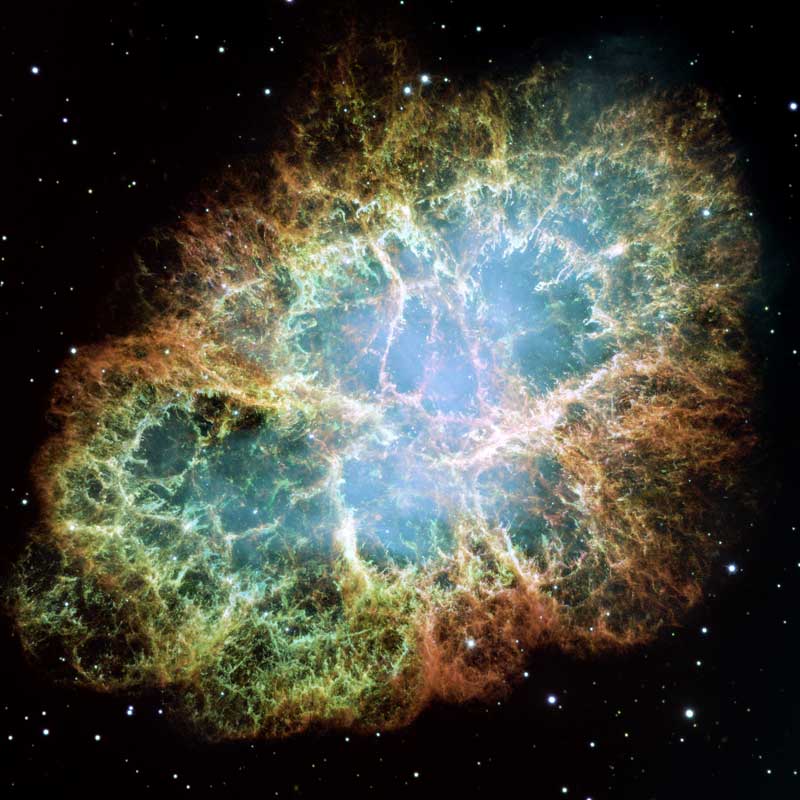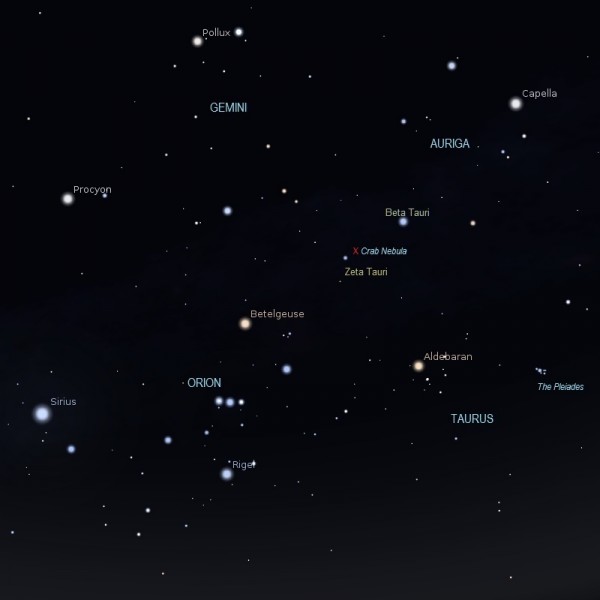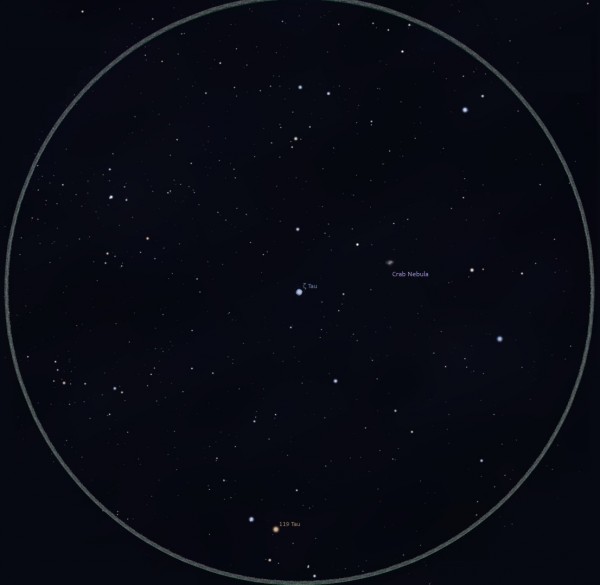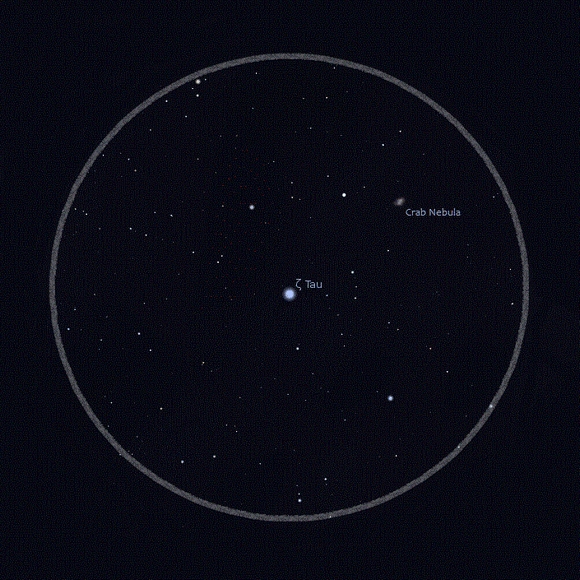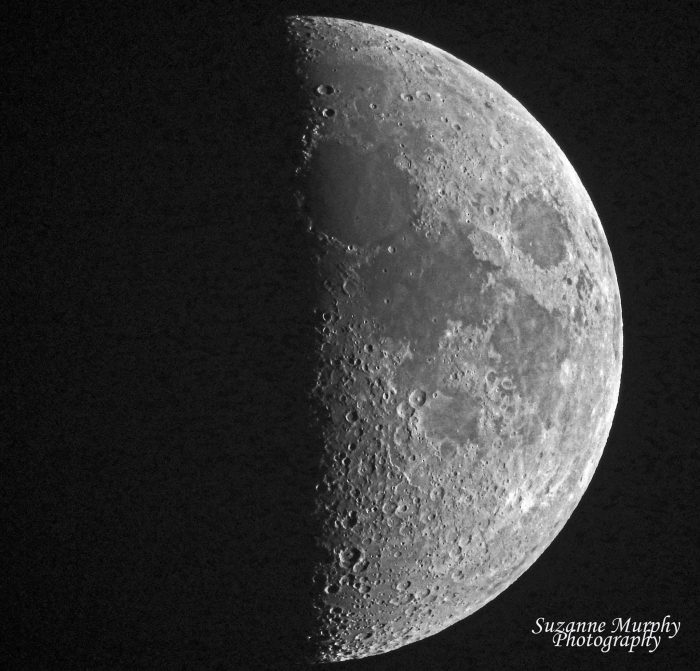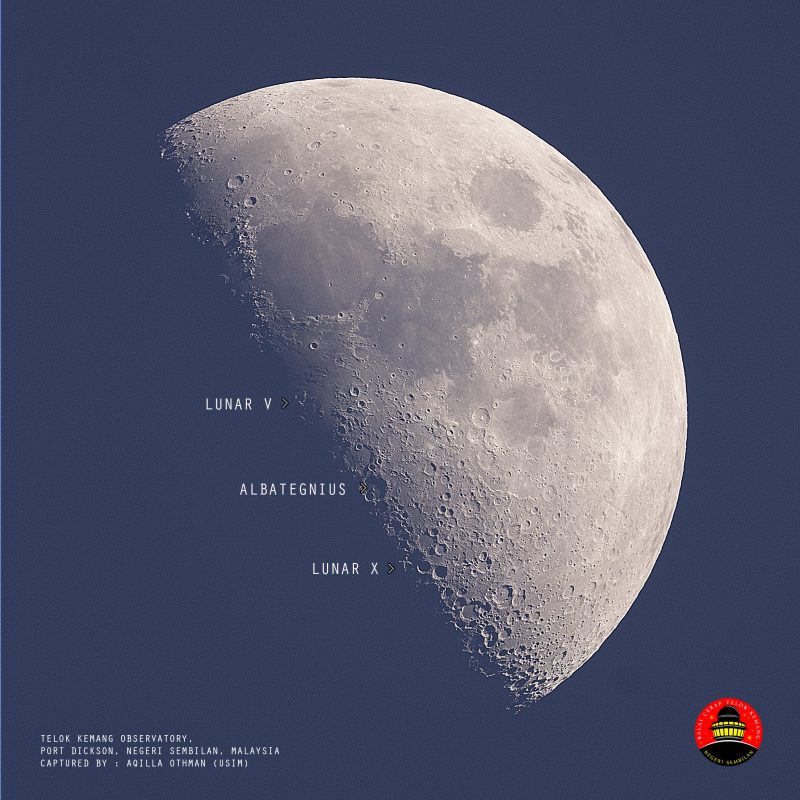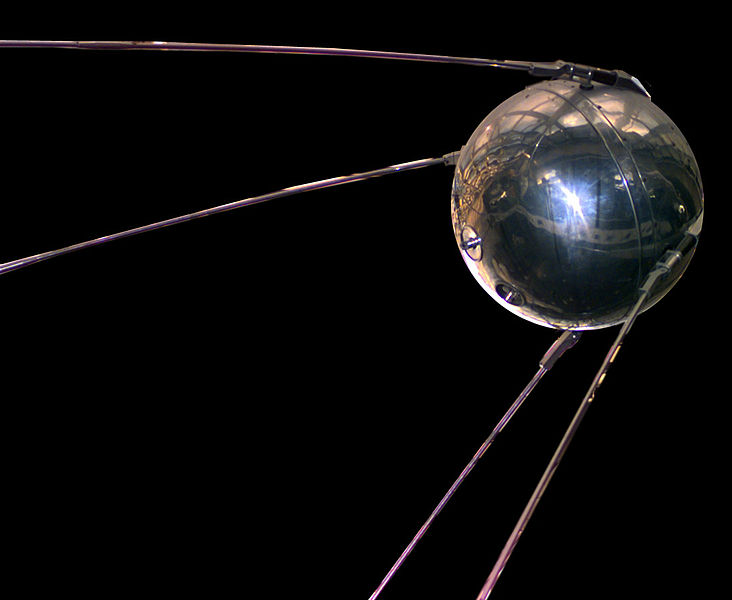
This year, the planet Saturn reaches eastern quadrature on October 7, 2019. By definition, a superior planet – such as Saturn – is said to be at east quadrature whenever it resides 90 degrees east of the sun on the sky’s dome.
Incidentally, the moon is at east quadrature (90 degrees east of the sun) at its first quarter phase. The moon recently displayed its first quarter phase (east quadrature) when it closely paired up with Saturn on October 5, 2019. These next couple of nights – October 6 and 7 – you can depend on the lit side of the waxing gibbous moon to point out Saturn, as illustrated on the feature sky chart at top.
If you could look down upon the plane of the solar system as Saturn swings to east quadrature, you’d see the sun-Earth-Saturn making a right angle in space, with the Earth at the vertex of this 90-degree angle.

This diagram is approximately to scale for when Mars is at quadrature. But Saturn’s mean distance from the sun is a little over 9.5 times the Earth-sun distance – otherwise known as the astronomical unit. Scroll to the bottom of this post for a diagram closer to scale.
Want to know the present distances of the planets from the Earth and sun? Click here.
Because Saturn lies 90 degrees east of the sun, Saturn reaches its highest point in the sky approximately 6 hours after the sun soars to its highest point at solar noon (midway between sunrise and sunset). Click here to find out when the sun and Saturn transit (climb highest up) in your sky.
About three months ago – on July 9, 2019 – Saturn was at opposition (180 degrees or opposite the sun in Earth’s sky). If you had looked down on the solar system plane at that time, you would have seen the sun, Earth and Saturn making a straight line in space. At opposition, a heavenly body climbs highest in the sky at midnight (midway between sunset and sunrise).
Opposition and quadrature can happen only to solar system bodies that orbit the sun outside of Earth’s orbit. Planets that orbit the sun inside of Earth’s orbit (Mercury and Venus) can never reach opposition or quadrature. Instead, they always remain near the sun as seen from Earth. So we see them either in the east before sunrise, or in the west after sunset.
Saturn’s oppositions and quadratures enabled the innovative astronomer Copernicus (1473-1543) to compute Saturn’s distance from the sun. He did this by charting Saturn’s (and the Earth’s) change of position from opposition to quadrature. All the while, Copernicus presumed that Saturn and Earth both orbit a central sun.
By using the astronomical unit – the Earth-sun distance – as his baseline, Copernicus relied upon the magic of geometry to figure out Saturn’s relative distance from the sun!

Opposition and quadrature happen only to solar system bodies outside of Earth’s orbit, as shown on diagram. What to know the dates for this year’s planetary oppositions and quadratures? Click here.
We provide an example of how Copernicus performed his brilliant detective work. In the 90 days between between Saturn’s opposition on July 9, 2019, and Saturn’s quadrature on October 7, 2019, Earth has traveled about 87 degrees of its 360-degree orbit around the sun.
Saturn, in the meantime, has completed only about 3 degrees of its 360-degree orbit. We can figure this because Saturn takes some 10,759 days to circle the sun. Therefore, in these 90 days, Saturn must have moved about 3 degrees (90/10,759 x 360 = 3 degrees). At east quadrature, then, the Earth-sun-Saturn angle equals 84 degrees (87-3 = 84), as shown on the diagram below; consequently, the Earth-Saturn-sun angle must be 6 degrees (90-84 = 6). By trigonometry, this places Saturn’s distance from the sun at a little over 9.5 astronomical units.
Bird’s-eye view of Saturn at east quadrature on October 7, 2019

If we could look down upon the plane of the solar system on October 7, 2019, we’d see the sun, Earth, and Saturn making a 90-degree angle in space, with Earth at the vertex of this 90-degree angle. The Earth-sun-Saturn angle is 84 degrees whereas the Earth-Saturn-sun angle depicts 6 degrees.
Want to know more on how Copernicus figured out planetary distances? Click here.
These next few days – October 6 and 7, 2019 – use the lit side of the moon to find Saturn, as this outer world sweeps to a solar elongation of 90 degrees east of the sun.
from EarthSky https://ift.tt/2LOK6Yy

This year, the planet Saturn reaches eastern quadrature on October 7, 2019. By definition, a superior planet – such as Saturn – is said to be at east quadrature whenever it resides 90 degrees east of the sun on the sky’s dome.
Incidentally, the moon is at east quadrature (90 degrees east of the sun) at its first quarter phase. The moon recently displayed its first quarter phase (east quadrature) when it closely paired up with Saturn on October 5, 2019. These next couple of nights – October 6 and 7 – you can depend on the lit side of the waxing gibbous moon to point out Saturn, as illustrated on the feature sky chart at top.
If you could look down upon the plane of the solar system as Saturn swings to east quadrature, you’d see the sun-Earth-Saturn making a right angle in space, with the Earth at the vertex of this 90-degree angle.

This diagram is approximately to scale for when Mars is at quadrature. But Saturn’s mean distance from the sun is a little over 9.5 times the Earth-sun distance – otherwise known as the astronomical unit. Scroll to the bottom of this post for a diagram closer to scale.
Want to know the present distances of the planets from the Earth and sun? Click here.
Because Saturn lies 90 degrees east of the sun, Saturn reaches its highest point in the sky approximately 6 hours after the sun soars to its highest point at solar noon (midway between sunrise and sunset). Click here to find out when the sun and Saturn transit (climb highest up) in your sky.
About three months ago – on July 9, 2019 – Saturn was at opposition (180 degrees or opposite the sun in Earth’s sky). If you had looked down on the solar system plane at that time, you would have seen the sun, Earth and Saturn making a straight line in space. At opposition, a heavenly body climbs highest in the sky at midnight (midway between sunset and sunrise).
Opposition and quadrature can happen only to solar system bodies that orbit the sun outside of Earth’s orbit. Planets that orbit the sun inside of Earth’s orbit (Mercury and Venus) can never reach opposition or quadrature. Instead, they always remain near the sun as seen from Earth. So we see them either in the east before sunrise, or in the west after sunset.
Saturn’s oppositions and quadratures enabled the innovative astronomer Copernicus (1473-1543) to compute Saturn’s distance from the sun. He did this by charting Saturn’s (and the Earth’s) change of position from opposition to quadrature. All the while, Copernicus presumed that Saturn and Earth both orbit a central sun.
By using the astronomical unit – the Earth-sun distance – as his baseline, Copernicus relied upon the magic of geometry to figure out Saturn’s relative distance from the sun!

Opposition and quadrature happen only to solar system bodies outside of Earth’s orbit, as shown on diagram. What to know the dates for this year’s planetary oppositions and quadratures? Click here.
We provide an example of how Copernicus performed his brilliant detective work. In the 90 days between between Saturn’s opposition on July 9, 2019, and Saturn’s quadrature on October 7, 2019, Earth has traveled about 87 degrees of its 360-degree orbit around the sun.
Saturn, in the meantime, has completed only about 3 degrees of its 360-degree orbit. We can figure this because Saturn takes some 10,759 days to circle the sun. Therefore, in these 90 days, Saturn must have moved about 3 degrees (90/10,759 x 360 = 3 degrees). At east quadrature, then, the Earth-sun-Saturn angle equals 84 degrees (87-3 = 84), as shown on the diagram below; consequently, the Earth-Saturn-sun angle must be 6 degrees (90-84 = 6). By trigonometry, this places Saturn’s distance from the sun at a little over 9.5 astronomical units.
Bird’s-eye view of Saturn at east quadrature on October 7, 2019

If we could look down upon the plane of the solar system on October 7, 2019, we’d see the sun, Earth, and Saturn making a 90-degree angle in space, with Earth at the vertex of this 90-degree angle. The Earth-sun-Saturn angle is 84 degrees whereas the Earth-Saturn-sun angle depicts 6 degrees.
Want to know more on how Copernicus figured out planetary distances? Click here.
These next few days – October 6 and 7, 2019 – use the lit side of the moon to find Saturn, as this outer world sweeps to a solar elongation of 90 degrees east of the sun.
from EarthSky https://ift.tt/2LOK6Yy

